
Never judge a book by its cover and never judge a dog by its name. Believe it or not, the Australian Shepherd Dog is not an Australian import. In fact, the Australian Shepherd originated around the time of the Gold Rush in the U.S. As his name does imply, however, he was bred for the purpose of herding livestock. Australian Shepherds make great companions for those who are willing to devote time to them. They are happiest when they have a task to do and their energy is channeled into different dog activities.
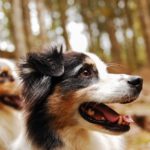
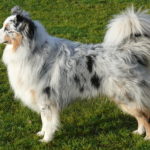

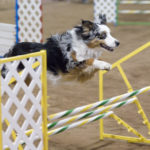
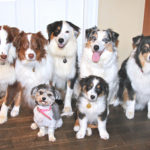
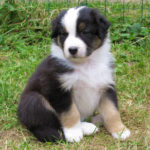
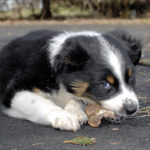
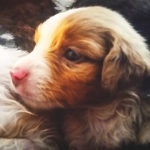
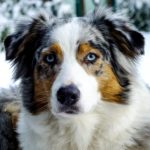
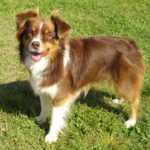
Did You Know?
- Australian Shepherds have high levels of energy. If you’re planning on adopting one, be ready to go exercising with them daily for an average of 30-60 minutes. They’re also very task-minded, so have them participate in daily obedience training and/or herding and agility competitions.
- Australian Shepherds need their exercise. If not, they can become very destructive, restless, and bark for long periods of time. Be ready to stimulate them physically and mentally through exercise and training.
- Australian Shepherds are very protective of their family and will bark to alert their family if they sense something suspicious. They can become surprisingly fierce when it comes to protecting their family.
- Even though they have a reputation for doing better in wide open spaces, Australian Shepherds can definitely live in big cities. The important part is that they get enough exercise to use up their high energy, so have at least a small yard available for them to run around.
- If you’ve never had a dog before, Australian Shepherd Dogs might be too much for you to handle. They need an experienced owner who is confident, firm, and not afraid to show them who’s boss. Australian Shepherds are known to be pushy with livestock – as they’ve been raised to be. This trait might transfer into the home and if the owner is timid and inexperienced, the dog might take over as the dominant alpha in the family.
- Due to their constant shedding, Australian Shepherds need weekly brushing in order to maintain their coats and keep them from matting. Trimming could also help make their coat look nice and tidy.
- Even though they might like playing around in a yard, Australian Shepherds do not like spending time alone in it – or by themselves in general – for long periods of time. They prefer the company of their human family and are happier when they’re close to them.
- Because of their natural standoffish attitude with strangers, it’s ideal to expose Australian Shepherds to friends, family, neighbors, and strangers starting in puppyhood to help them learn how to be social pets. If not, they may become anxious and fearful when exposed to people they’re not used to seeing and may even bite out of fear and aggression.
Breed Characteristics
Adaptability

Adapts Well to Apartment Living: 0.5/5
Good for Novice Owners: 1.5/5
Tolerates Being Alone: 2.5/5
All-Around Friendliness

Affectionate with Family: 5/5
Dog-Friendly: 4.5/5
Friendly Toward Strangers: 2.5/5
Health Grooming

Amount of Shedding: 3.5/5
Easy to Groom: 1.5/5
General Health: 1.5/5
Trainability

Easy to Train: 5/5
Intelligence: 5/5
Tendency to Bark or Howl: 4.5/5
Exercise Needs

Energy Level: 5/5
Exercise Needs: 4.5/5
Potential for Playfulness: 5/5
 Australian Shepherd History
Australian Shepherd History
Originally bred to herd livestock for farmers and ranchers in the western U.S., Australian Shepherds are 100% American-bred dogs, regardless of what their name might suggest. Even today, some Aussies (as they’re nicknamed) are still doing their job of herding livestock.
Unfortunately, we don’t know exactly which breeds were used to create the Australian Shepherd, but there are many theories. One of the most accepted explanations is that shepherd-type dogs and collies who were imported from Australia during the 1840s – which explains the name – were bred together to form the Australian Shepherd Dog we know and love today. In creating it, breeders wanted a dog with enhanced herding ability, a hard work ethic, versatility, and intelligence.
After World War II, Australian Shepherds enjoyed a popularity boom that was in part thanks to rodeos and Western-style horseback riding. Australian Shepherds worked alongside cowboys at rodeos, horse shows, western movies and tv shows, and people were charmed and entertained by the athletic dogs. Even though their popularity had risen in the 1940’s, it wasn’t until 1993 that the American Kennel Club recognized the breed. At the moment, Aussies rank in the top 20 of the most popular dogs for the American Kennel Club.
Even though he’s not primarily used for herding livestock anymore, the Australian Shepherd is still as energetic, clever, and eye-catching as ever and serves as a good companion and protector for many families around the world.
Australian Shepherd Size
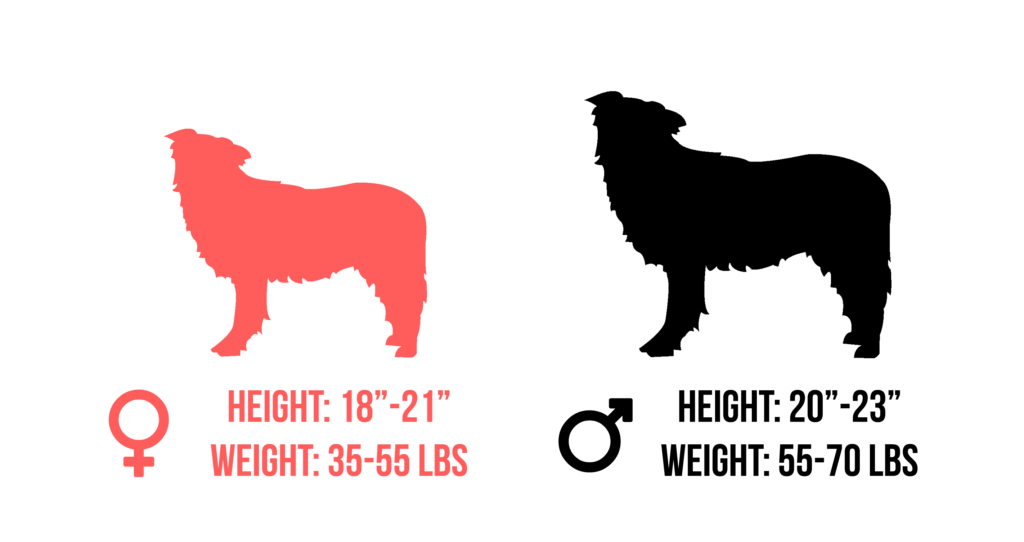 Male Australian Shepherds will typically weigh between 55 and 70 pounds, while females will weigh between 35 and 55 pounds. They are also slightly longer than they are tall, with males standing between 20 to 23 inches tall at the shoulder and females standing between 18 to 21 inches tall at the shoulder.
Male Australian Shepherds will typically weigh between 55 and 70 pounds, while females will weigh between 35 and 55 pounds. They are also slightly longer than they are tall, with males standing between 20 to 23 inches tall at the shoulder and females standing between 18 to 21 inches tall at the shoulder.
There are different variations of the Australian Shepherd out there, including toy, miniature, and teacup Australian Shepherds. While this may offer more options to potential pet owners, breeders don’t recognize these variations as true Australian Shepherds. To them, Australian Shepherds are supposed to be able-working dogs with the capability of herding livestock for miles in rough terrain and weather, so any size variation is not truly an Australian Shepherd.
Australian Shepherd Appearance
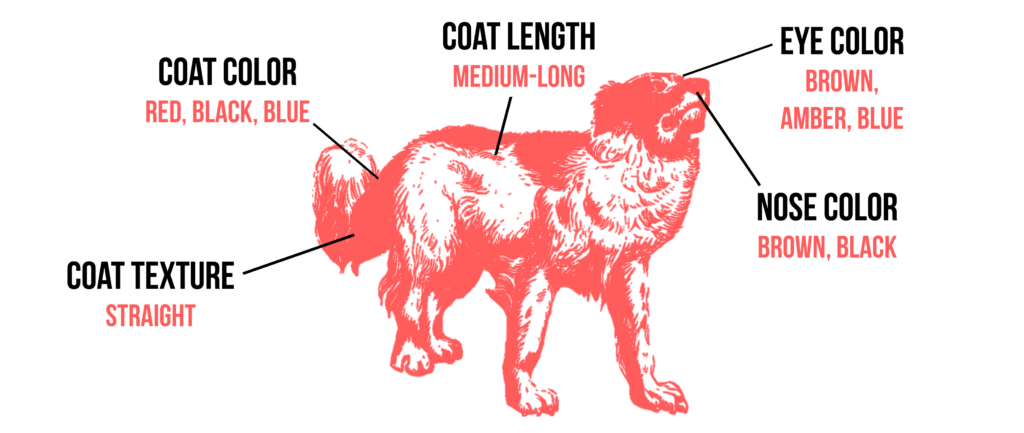 Australian Shepherds that live in cold climates tend to have a heavier undercoat than those enjoying sunny temperatures. Generally speaking, however, Aussies have a medium-length coat that is water resistant, which keeps them comfortable in the rain and snow.
Australian Shepherds that live in cold climates tend to have a heavier undercoat than those enjoying sunny temperatures. Generally speaking, however, Aussies have a medium-length coat that is water resistant, which keeps them comfortable in the rain and snow.
Aussies have long, lavish hair around the neck and chest; it is especially thick and pronounced in males. The back of their forelegs and britches are covered with moderate feathering – the fur found on the upper part of the hind legs. The body is covered with straight or wavy hair and the head, ears, front of the forelegs, and below the heels are covered with short, smooth hair.
Their coats come in several different colors, like red, tri-color (white, black and tan), black, blue merle, and red merle. Merle coats, whether they be red merle or blue merle, come in patches of dark blotches against a lighter background. A blue merle coat has black patches on gray and a red merle dog has red patches on beige. As dogs with merle coats get older, their color also darkens.
Australian Shepherd Behavior
Personality
First-time owners should think about getting another breed before they get an Australian Shepherd. Because they have been bred with the purpose to be pushy with livestock, Aussies need a firm and confident owner, otherwise they will take the dominant role in the home.
Naturally loyal to family, Australian Shepherds make a great family pet. However, they are also standoffish when it comes to strangers. It’s important to introduce them to new people and experiences from an early age. By helping your Aussie become a social pet, you can ensure that they grow up to be a well-rounded dog and be the best family pet they can be.
A good way to help your Australian Shepherd puppy become social is by enrolling them in a puppy kindergarten class. Other ways to help your pup polish their social skills is by taking them to dog parks, going on leisurely strolls, inviting visitors on a regular basis, and going into stores that allow dogs.
Children and Other Pets
Since they’re naturally herding dogs, Aussies may initially consider children to be part of their “flock,” which may lead to chasing and nipping in an attempt to herd them. Teach your dog that such behavior is not allowed and they will make great companions for families with kids.
Dogs are not the only ones that need to be taught how to behave. Teach your children how to approach dogs and touch them. No matter how friendly they are, dogs are animals and should not be left unsupervised with children. Since kids are also learning, it’s better that they learn from you instead of the hard way, so make sure they know not to approach a dog while they’re sleeping or eating; also, make sure they don’t try to take away a dog’s food or pull on their tails.
While they may learn to get along with other pets, you have to teach them that other household pets are not there to be herded. To avoid any conflicts, keep an eye on your pets until your Aussie learns that your other pets are not livestock.
Australian Shepherd Health
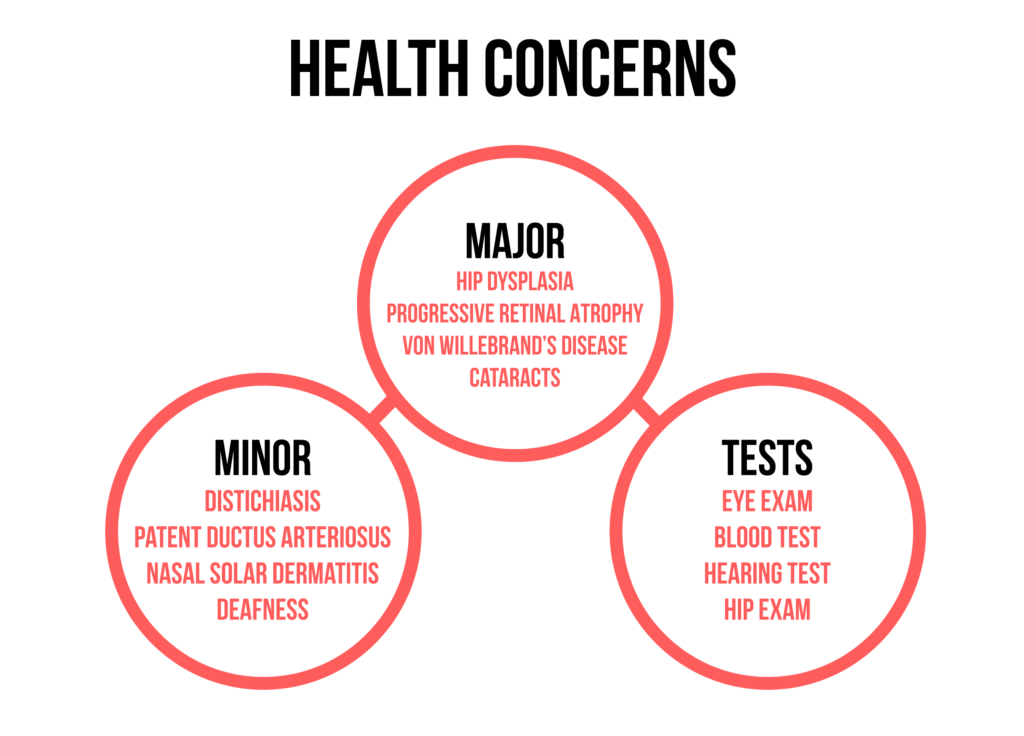 Fortunately, Australian Shepherds tend to be healthy dogs. However, just like all dogs, they have a tendency to suffer from certain health conditions. While your Aussie may not have the bad luck to go through any of these conditions, it’s still a good idea to keep an eye on them and the symptoms accompanying these diseases, just as a precaution.
Fortunately, Australian Shepherds tend to be healthy dogs. However, just like all dogs, they have a tendency to suffer from certain health conditions. While your Aussie may not have the bad luck to go through any of these conditions, it’s still a good idea to keep an eye on them and the symptoms accompanying these diseases, just as a precaution.
Hip Dysplasia
Hip Dysplasia is a heritable condition passed down from parent to pup where the dog’s femur doesn’t perfectly fit into the pelvic socket of the hip joint, which can cause pain and lameness on one or both rear legs. However, keep in mind that the condition can exist without clinical signs, which is why it’s important to screen your Aussie and have them X-rayed to make sure they don’t suffer from hip dysplasia. Dogs with hip dysplasia can also develop arthritis as they age.
Elbow Dysplasia
Another heritable condition which might affect your Australian Shepherd is elbow dysplasia, which is particularly common among large-breed dogs. A dog’s elbow is made up of three bones, and different growth rates of these bones may cause joint laxity and elbow dysplasia. Depending on the situation, your vet might either recommend surgery or simply medication to control the pain, as this condition can lead to painful lameness.
Epilepsy
Epilepsy is a disorder that can cause seizures and can affect Aussies. If properly managed, a dog with epilepsy can live a happy and satisfied life. Unfortunately, there is no cure for this hereditary disorder, so medication must be taken to manage it.
Deafness
Unfortunately, it’s fairly common for Aussies to suffer from deafness. Whether the condition can be treated medically or surgically depends on the form of deafness your dog suffers from, but usually there is no cure for it. To make life easier for both dog and owner, there are various products on the market that can be put to use such as vibrating collars. If you find out your dog will suffer from deafness, make sure you evaluate your Aussie’s need and if you will be able to take care of it.
Osteochondrosis Dissecans (OCD)
Primarily affecting the elbows (but sometimes the shoulders), osteochondrosis dissecans is a joint disorder that is caused by the improper growth of cartilage. The condition causes stiffening pain, disabling the dog from even being able to bend and use the affected area. OCD can be caught relatively early, between four to nine months of age. Avoid feeding your Aussie high-protein and “growth formula” foods, as they may contribute to the disorder.
Progressive Retinal Atrophy (PRA)
Due to a loss of photoreceptors in the back of the eye, dogs suffering from progressive retinal atrophy will eventually become blind. This degenerative eye disorder can be caught early, even years before symptoms show, which can serve as a preparation for both dog and owner. Dogs will use their other sense to compensate for their vision loss and can continue to have an otherwise healthy and happy life.
Cataracts
Another vision problem that might affect your Aussie is cataracts. Affecting the lens of the eyes, cataracts is a cloudy-looking opacity in the eyes that makes it difficult to see. Fortunately, the condition usually occurs at old age and can be surgically treated.
Distichiasis
It seems like Aussies can’t catch a break when it comes to vision problems. Distichiasis is a condition that happens when an excess row of eyelashes grow on a dog’s eye oil gland and protrude along the edge of the eyelid, causing irritation. If you see your dog squinting or rubbing their eyes constantly, they may be suffering from distichiasis. Fortunately, the condition can be treated surgically by freezing the additional eyelashes and then removing them.
Collie Eye Anomaly (CEA)
A vision disorder that is passed down genetically, collie eye anomaly can cause blindness in certain dogs, such as Aussies. Symptoms show up at an early age, usually by the time a dog is two years old. Unfortunately, there is no treatment for the condition. If you find out your Aussie suffers from this, don’t fret, as dogs will make up their vision loss by using their other sense as we’ve pointed out before. If you do not want your dog to pass this condition down, then make sure you get your Aussie spayed or neutered.
Persistent Pupillary Membranes (PPM)
The final eye condition that your Aussie may suffer from (and yes, we know it’s a lot) is persistent pupillary membranes. The condition forms strands of tissues in the eye. These strands are remnants of fetal membranes that helped nourished the eye lenses before birth. Usually they’ll disappear by the time a puppy is four to five weeks old, but sometimes they remain.
The strands can be found all the way from the iris to the cornea and even to the anterior chamber of the eye. If the strands have not disappeared by the time a puppy is eight weeks old then your dog may suffer from corneal opacities and cataracts. Talk to your veterinarian to see if eye drops will be able to help break down these strands.
Hypothyroidism
When suffering from this condition, your Aussie’s thyroid gland will produce abnormally low levels of hormones. If your dog suffers from infertility, it may be a sign that they suffer from hypothyroidism. Your dog’s skin will become dark and tough, while their fur will become coarse and brittle and even fall out.
Other symptoms of the condition include mental dullness, drooping eyelids, irregular heat cycles, obesity, lethargy, and overall low levels of energy. Luckily, the condition can be treated through medication. The medication must be administered on a daily basis for the rest of your dog’s life and, if properly managed, your Aussie can continue to lead a long and healthy life.
Allergies
Dogs, in general, can suffer from a variety of allergies. If your Aussie suffers from food allergies, treat it by trial and error until you discover which food causes the allergies. If they suffer from contact allergies, such as from flea powder, dog shampoos, or bedding, remove the cause of the allergy.
If your Aussie suffers from inhalant allergies, like when they breathe in dust, mildew, or pollen, make sure they receive the proper allergy medication based on the severity of the allergy. If your Aussie suffers from ear infections, that may be a sign of inhalant allergies.
Drug Sensitivity
Herding breeds, like Collies and Australian Shepherds, tend to suffer from drug sensitivity. Due to a mutation in the gene that removes toxic substances from the body, dogs that suffer from this condition cannot put this gene to use and certain drugs will cause toxicity instead.
Chemotherapy drugs and Ivermectin, a drug used to prevent heartworms, are among some of the drugs that can cause toxicity in a dog with this condition.
Some of the signs and symptoms include depression, incoordination, hypersalivation, seizures, coma, and even death. While there is no known treatment, there is a genetic test that can identify if your dog suffers from this condition.
Cancer
Just like humans, dogs can be susceptible to cancer. The treatment depends on the specific form of cancer your dog suffers from and how advanced it is. Treatment options include surgical removal of the tumor, chemotherapy, or both.
Nasal Solar Dermatitis
Dogs that have little or no pigment in their nose suffer from nasal solar dermatitis. This condition may cause lesions on the nose (and sometimes the eyelids) due to a hypersensitivity to the sun. The lesions range from light pink to ulcerating lesions.
It might be difficult to diagnose the condition, as similar lesions can be caused by different diseases. If you find out (or suspect) that your Aussie suffers from this condition, keep them away from direct contact with the sunlight and apply doggie sunscreen if you plan on taking him out on walks.
A surprisingly effective treatment is to tattoo your Aussie’s nose black, as the ink serves as a shield against the sunlight.
Australian Shepherd Maintenance
Care
Aussies have high levels of energy and strong desires to herd something, as that is their natural purpose. Make sure your fence is secure enough that your dog will not be able to jump over it or dig under it to make their escape. Underground electronic fencing might not be a viable solution, as an Aussie’s desire to go out will trump any mild shocks they might get from the fence. When you walk your Aussie, make sure you use a leash unless you want them to run loose.
Because of their high-energy, it’s best to stimulate your Aussie with 30 minutes to an hour of exercise and outside playing. Having them participate in agility competitions is also a good idea. If you are away, having puzzle toys around like Buster Cubes will help keep your dog entertained until you get back.
Puppy Australian Shepherds are not as active as their adult counterparts. If you plan to take your pups out for exercise, however, make sure they don’t run on hard surfaces or jump a lot. Because their skeletal system is still developing, being active in such surfaces can cause stress to their system and even cause future joint problems.
Due to their herding qualities, Australian Shepherds may nip and chase other animals and humans instinctively. It’s important to take your Aussie to obedience class, as that will help them learn that humans and other pets aren’t livestock, while simultaneously satisfying their need for hard work and mental stimulation.
Australian Shepherds respond well to a confident owner, as they want to follow directions from someone. They respond well to positive reinforcement when it comes to training them. If you reward their behavior with praise, play, or food, they will likely repeat that behavior, especially if you show them who’s in charge, as they will want to impress you.
Feeding
The recommended daily amounts of food you should feed your Aussie is between 1.5 to 2.5 cups of high-quality dry food a day, divided into two meals. Don’t leave food out in a bowl all day for your dog to eat. Make sure your dog maintains a good and healthy shape by measuring his food intake. If you want to check if your Aussie is overweight, you can administer the eye and hands-on test.
When you look down at him, you should be able to see his waist. Place your hands on his back, fingers spread downward, and with your thumbs along the spine. You should feel his ribs but not see them unless you’re pressing hard. If you can’t, that means he’s overweight and you need to cut his food intake and increase his exercise time.
Grooming
Like many dog breeds, Australian Shepherds shed. While they shed all year round, the amount increases during springtime, as this is when they shed their winter coats. To prevent matting, make sure you’re brushing your Aussie’s coat on a weekly basis, perhaps even more during shedding season.
If you want your Aussie’s coat to look even better, spray the coat with a dog hair conditioner diluted with water before you start brushing, as this will help to detangle any hairs. Don’t just brush the top coat. Use a slick brush and get all the way down to the skin, stroking in the direction that the hair grows. If you’re having trouble, use an undercoat rake to remove any excess hair. You may need to use a stripping comb to work through the mats that combine behind your Aussie’s ears.
By brushing him on a regular basis, your Aussie should be clean most of the time and will only need a bath when they get dirty. When you do give him a bath, make sure to use shampoo made specifically for dogs, otherwise you might dry his skin and coat.
Besides making sure your Aussie’s coat is clean, grooming sessions serve as the perfect time to check your dog’s overall well-being. As you groom him, check to see if there are any rashes, dry skin, sores, or any signs of infection such as tenderness or inflammation. Check his ears to see if there are any foreign objects like foxtails or burrs (plants that may attach to their ears). Check his eyes to see if there is any goopy discharge. If the coat is dull instead of shiny, that may be a sign that a change of diet is in need or grooming should increase.
If you can hear your Aussie’s nails clicking on the floor, it means they are too long and need trimming. Nail trimming should be done regularly to prevent splintering.
Trimming does not need to be reserved for nails only. A little trimming around the tail area, on and around the ears, and on the feet and between the toes will keep your dog looking neat and tidy. Professional groomers are available in case you can’t or don’t want to handle anything beyond basic grooming.
Questions
How long do Australian Shepherds live?
Aussies have an average lifespan of 12 to 15 years.
Are there such things as miniature Australian Shepherds?
There are such things as the Miniature Australian Shepherd: they’re known as the Miniature American Shepherd. This dog breed was developed from a small group of Australian Shepherds. The breeders wanted to keep the Aussie’s keen instincts and dependable character and put it in a more compact body – and they succeeded!
Border Collie versus Australian Shepherd
Border Collies and Australian Shepherds look a lot alike. There are small nuances in the ears and tail that set them apart, but otherwise, it’s hard to discern them visually unless you’re an experienced breeder. Working line Border Collies do tend to be smaller and lighter, but these differences disappear with competition dogs. Border Collies are more energetic than Aussies and more flighty and timid.
Resources
Rescue Groups
There are many Australian Shepherds in need of a new home through adoption or fostering. The following is a list of different rescue groups throughout the nation. Contact the local or national breed club if you need help finding a rescue group in your area.
- Aussie Rescue and Placement Helpline, Inc.
- New Spirit 4 Aussie Rescue
- South Texas Aussie Rescue
- Aussie Rescue of Ontario
- Australian Shepherd Rescue Page
Breed Organizations
Wondering where to find an Australian Shepherd club? Click on any of the links below to find additional information about the Aussie from these breed clubs, associations, and organizations.
Top Breeders
The Australian Shepherd breed is one of the most popular breeds in the U.S., which is why it’s so important to choose a good breeder when looking for your own Australian Shepherd. If you’re looking for a trustworthy Australian Shepherd breeder, then review our list of the most reputable Australian Shepherd breeders of 2017.
- Pine Springs Aussies (Mineral, Virginia)
- Nitania Aussies (Port Matilda, Pennsylvania)
- Samilyn Aussies (Whitmore Lake, Michigan)
- Bunkhouse Aussies (Albertville, Alabama)
- Ranch Mott (San Tan Valley, Arizona)
- Hatch Horses and Aussies (Snowflake, Arizona)
- Envy Aussies (Scottsdale, Arizona)
- Rocking Diamond Ranch (Phoenix, Arizona)
- Aussie for Me (Santa Maria, California)
- JnD’s Australian Shepherds (Slinger, Wisconsin)
Australian Shepherd Adults For Sale
Interested in buying an adult dog instead of an Aussie puppy? If you are interested in purchasing adult Australian Shepherds, click on the links below to find what you’re looking for.
Australian Shepherd Puppies For Sale
Have you ever thought about having your own Australian Shepherd puppy? If you’re interested in purchasing Australian Shepherd puppies, look through the different online marketplaces below that have Australian Shepherd puppies for sale.
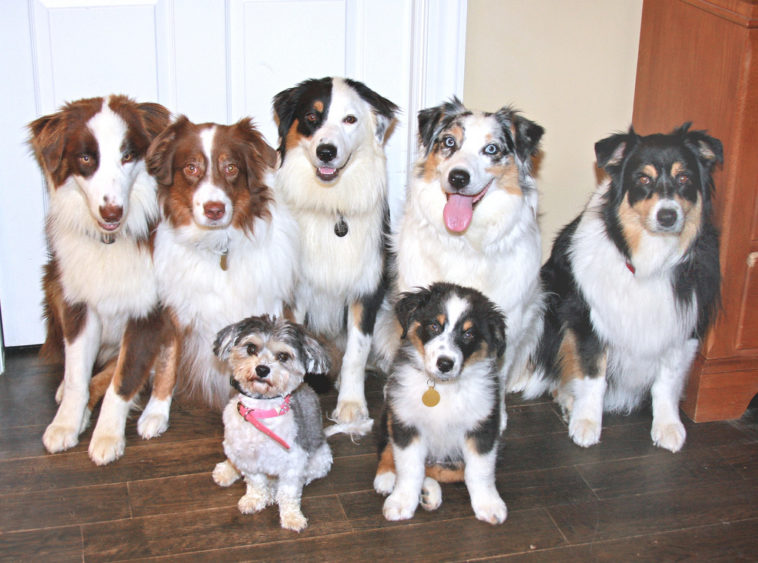
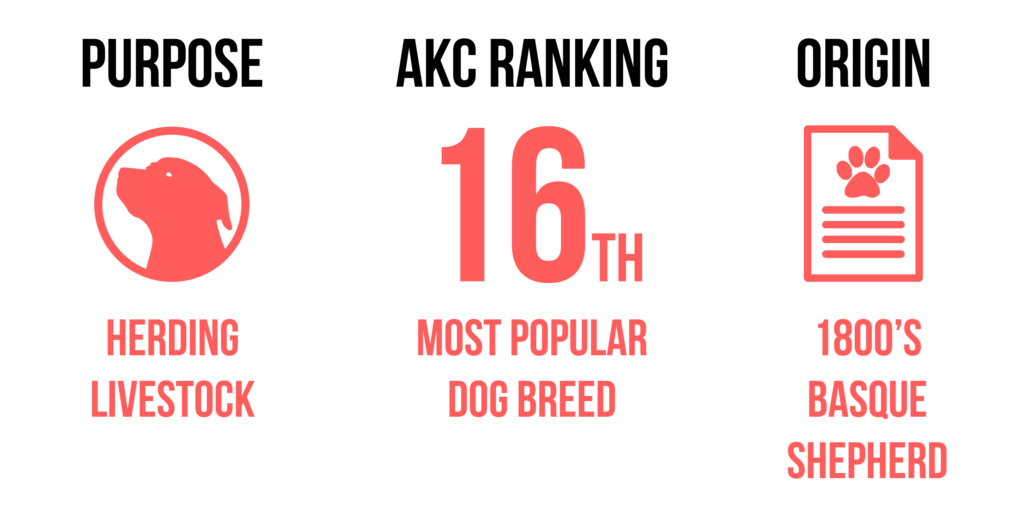 Australian Shepherd History
Australian Shepherd History